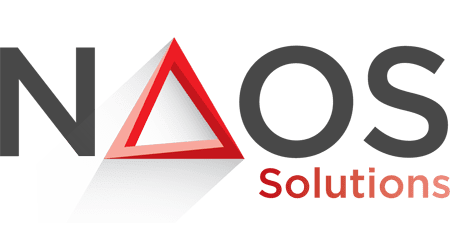In today’s digital age, where customer expectations are higher than ever, effective Customer Interaction Management (CIM) is a cornerstone of successful business strategies.
Calabrio’s report suggests that 97% of customers believe customer loyalty depends on customer service interactions. CIM is an increasingly outsourced core function to contact centers. Their expert teams address customer concerns promptly and efficiently, keeping your customer base happy and loyal.

Outsourcing customer interaction management to contact centers is excellent for business growth. With this strategy, businesses can save significant time, optimize their human and financial resources, and maintain robust customer service: a win-win for everyone!
Below, we discuss how Customer Experience professionals can leverage outsourced contact centers to maximize efficiency in customer interactions. We will review potential challenges and their solutions. Let’s get started.
UNDERSTANDING CUSTOMER INTERACTION MANAGEMENT IN OUTSOURCED SETTINGS
What is an Efficient Customer Interaction Management?
Customer Interaction Management (CIM) encompasses businesses’ tools, technologies, and processes for managing, analyzing, and improving customer interactions across various channels. The primary goal is to provide a seamless and satisfying customer experience that fosters loyalty and drives growth.
Contact centers are the frontline in this endeavor, where each interaction significantly impacts the brand’s perception. Agents at these centers must exhibit diverse skills tailored to their specific channels. For instance:
- Phone interactions require agents to have excellent verbal communication skills and the ability to resolve issues without visual aids.
- Email and chat communications demand strong written communication skills, attention to detail, and the capacity to convey tone properly without face-to-face interaction.
- Social media channels require agents to be quick, proactive, and capable of handling public scrutiny while maintaining the brand’s voice.

Businesses can implement a robust feedback and analytics system to capitalize on the lessons learned from managing these interactions. By systematically collecting and analyzing customer feedback across all channels, companies can identify common pain points, successful strategies, and areas for improvement.
This data should then feed back into training programs, helping to refine agent skills and adjust strategies to meet customer needs better. Additionally, leveraging advanced analytics tools can help pinpoint trends and predict future customer behaviors, allowing businesses to adapt their approaches and optimize the customer experience continually and proactively.
Through strategic analysis and continuous improvement based on direct customer interactions, businesses can enhance their service quality, increase customer satisfaction and loyalty, and ultimately drive business growth.
Optimizing Interaction Management
Effective CIM involves more than just handling calls and emails; it includes proactive communication and efficient call handling, which are critical for enhancing customer relationships. Whether interactions occur via phone, email, chat, social media, or in-person, each touchpoint is an opportunity to improve the customer experience and gather insights for further optimization.
A pivotal element in optimizing these interactions is using an efficient Customer Relationship Management (CRM) tool. Such a tool enables agents to access the complete history of a client’s interactions across all channels.
This comprehensive view allows agents to provide personalized and informed responses tailored to each customer’s individual needs and previous experiences. Integrating a robust CRM system ensures that every customer feels understood and valued, significantly enhancing the effectiveness of each interaction and fostering stronger customer loyalty.
In-House vs. Outsourced CIM
While some businesses may choose to manage CIM in-house, maintaining a dedicated team and infrastructure, outsourcing offers a less time-consuming and cost-effective alternative. In the outsourced model, a third-party provider takes over all CIM-related tasks, allowing businesses to allocate their resources more effectively.
Outsourcing CIM allows companies to focus on their core competencies while entrusting customer service to expert teams. This strategy particularly benefits the telecom, SaaS, e-commerce, and retail sectors, where prompt support directly correlates with customer satisfaction.
Consider a mid-sized e-commerce platform that transitioned to outsourcing its customer interactions. Previously, the customer support team solved customers’ queries within 24 hours. After partnering with an outsourced contact center, the resolution time was reduced to under 2 hours, leading to a 40% increase in customer satisfaction ratings.
This example illustrates the efficiency gains possible when outsourcing CIM.
ENSURING THE TEAM’S QUALITY ASSURANCE
Effective Customer Interaction Management (CIM) requires a robust training framework that ensures the outsourced customer support team meets and exceeds customer expectations.
Here’s how you can actively participate in building a team that champions your brand values and delivers exceptional service.
Agent Selection
Choosing the right agents is the first step in ensuring the effectiveness of your Customer Interaction Management (CIM). Your involvement as the client is crucial in selecting agents who will handle your customer interactions.

This collaboration allows you to:
- Ensure Brand Alignment: You know your brand best. Participating in the selection process, you help ensure that agents understand and reflect your brand’s values and voice in every customer interaction.
- Guarantee Specialized Skills: Different services or products may require unique handling skills. Your input helps pick agents with the right potential or existing skills.
- Enhance Customer Experience: By choosing agents that align with your customer service expectations, you ensure a cohesive and consistent customer experience, boosting satisfaction and loyalty.
- Build Trust and Accountability: Your choice in selecting agents fosters trust between you and your outsourced partner and establishes a sense of accountability among the agents, enhancing their commitment to your objectives.
Initial Training
Once the team of agents is selected, they undergo an initial comprehensive training program designed to prepare them for their roles effectively.
This program should be structured around three key areas:
- Instilling Core Values and Soft Skills:
- Core Values: Agents are immersed in your brand’s core values to ensure they embody these principles in every interaction. This includes understanding the brand’s mission, vision, and the ethical standards it upholds.
- Soft Skills: Training also focuses on developing interpersonal skills such as empathy, patience, and communication. These skills are crucial for managing customer emotions and building solid relationships.
- Procedures and Service Level Agreements (SLAs):
- Procedures: Detailed walkthroughs of specific customer service procedures ensure agents know how to handle various scenarios. This includes training on operational protocols, customer interaction flows, and escalation paths.
- SLA Adherence: Agents learn the importance of adhering to Service Level Agreements, which define the expected timeframes and quality standards for responses and resolutions. This training ensures technical precision in tracking and meeting these critical metrics.
- Equipping with Necessary Hard Skills:
- Product Knowledge: Agents receive in-depth training on all products or services, enabling them to handle queries with confidence and accuracy.
- Technology Use: Comprehensive instruction on CRM systems and other technological tools that facilitate customer management.
- Problem Solving: Techniques for logical and practical resolution of complex issues, ensuring agents can think critically and creatively to resolve customer problems efficiently.

Continuous Improvement
However, more than one-time training is required. The outsourcing partner should continuously train agents on customer handling skills and product knowledge, adapting to changing customer preferences and industry trends, such as social e-commerce and omnichannel support.
After setting up a system, quality monitoring becomes paramount. Agent performance should be evaluated based on first-call resolution, average handling time, and customer satisfaction rates. It’s also important to compare your service standards with industry benchmarks.
More importantly, setting up feedback loops for agents to quickly escalate and address recurrent problems based on their day-to-day interactions. Agents should be able to suggest improvements.
If the results of your metrics are not satisfactory, reassess your training and quality monitoring programs to align better with operational goals and customer expectations.
HANDLING HIGH VOLUMES OF CUSTOMER INTERACTIONS
As your business grows, so will your customer base. The last thing you want is to keep your customers waiting. A recent report found that 39% of consumers are less patient today than before the COVID-19 pandemic.
Partner with a contact center that can scale quickly according to your business needs. The center should have enough agents trained and ready to handle high volumes of customer interactions during peak times.
Proper resource allocation is also important during this time. Use real-time analytics to identify peak hours and allocate agents accordingly.
For instance, if most customers contact you during the evening, schedule enough agents accordingly. Do the same for holiday seasons or other significant events impacting customer behavior.
You can also use self-service options or chatbots to manage agent workload during these times. Speaking of chatbots, AI can also improve contact center efficiency. AI-assisted predictive analysis can help forecast peak times and high-volume periods, allowing you to prepare in advance.

Larry Goldman, Vice President of Customer Solutions at Braun Consulting, explains that many companies need to learn how to use customer data. He says:
They go first to the touch points and have no true understanding of the customer. Or, when they do focus on the analytical side, they don’t have the in-house skills to analyze the data they collect.
The solution? Outsource CIM to a contact center with expertise in analyzing customer data.
CHALLENGES AND CONSIDERATIONS
A common challenge in outsourced Customer Interactions Management is integrating modern technologies like automation, customer relationship management (CRM) systems, data analytics, and omnichannel capabilities. The best solution is to choose a contact center equipped with the appropriate technology and ready to advance.
Data security and privacy also play a role in an outsourced setting. Deloitte data shows a significant decrease in consumers’s trust in online businesses to protect their data over the past few years.
Businesses must comply with regulations and laws to avoid losing customers due to data breaches or mishandled information.
That is why you should only work with a CIM partner with a solid track record in securely and ethically handling customer data. Plus, implement the following preventive measures:
- Limit data access to authorized personnel only.
- Encrypt sensitive information.
- Update security protocols regularly and conduct audits.
- Plan for data transfer, destruction, ownership, and return after the contract ends.
Another challenge businesses face is linguistic and cultural differences. For example, a contact center in the Philippines may have different slang or idioms than a US-based business.
The gap in language and cultural understanding can lead to misunderstandings and misinterpretations.
A good partner for Customer Interaction Management should have a diverse team fluent in your customer base’s language and cultural nuances.
CONCLUSION
Outsourcing customer interaction management helps improve your brand reputation and satisfy your consumers. However, it’s not a set-it-and-forget-it solution.
Your involvement is essential to ensuring smooth CIM operations. Use a blend of metrics to measure your partner’s performance and quality-check the interactions.
Communicate regularly with your partner and provide feedback to ensure top-notch customer interactions. If you want to integrate new technology or scale up the operations, work alongside your partner to make the transition hurdle-free.
Looking to enhance efficiency in your customer interactions? Contact our experts to learn how NAOS CX can transform your contact center operations.

